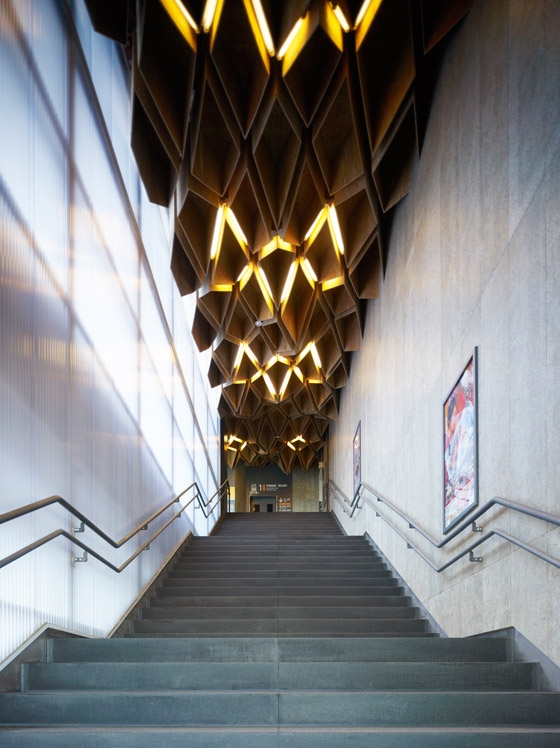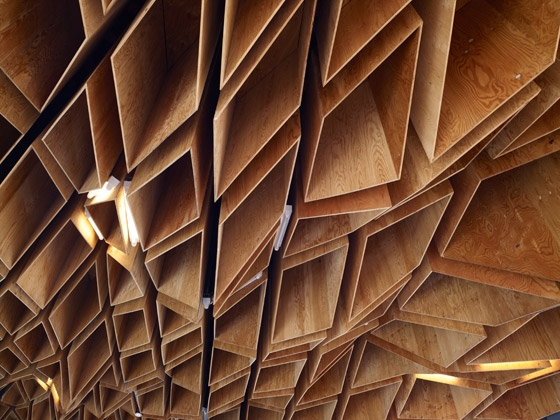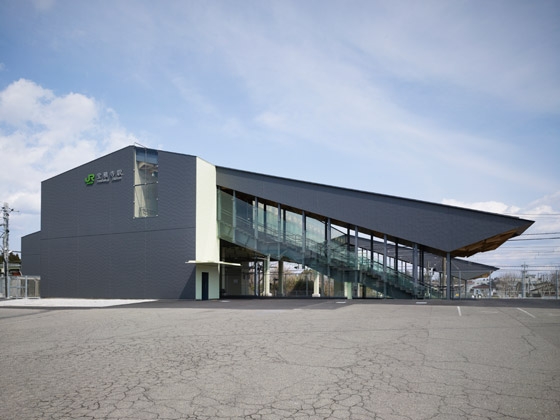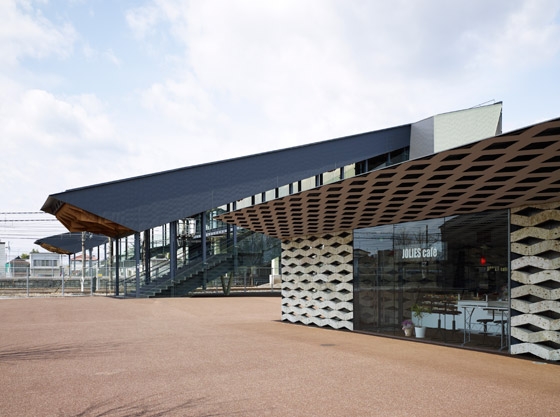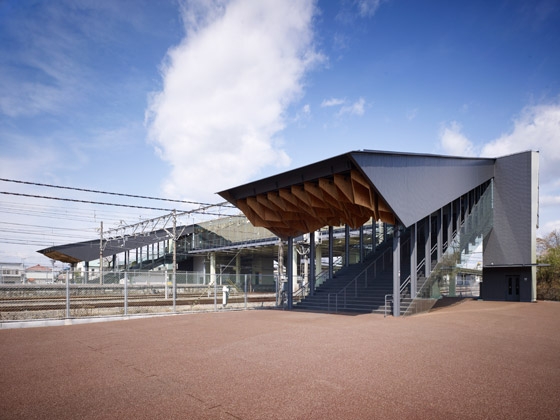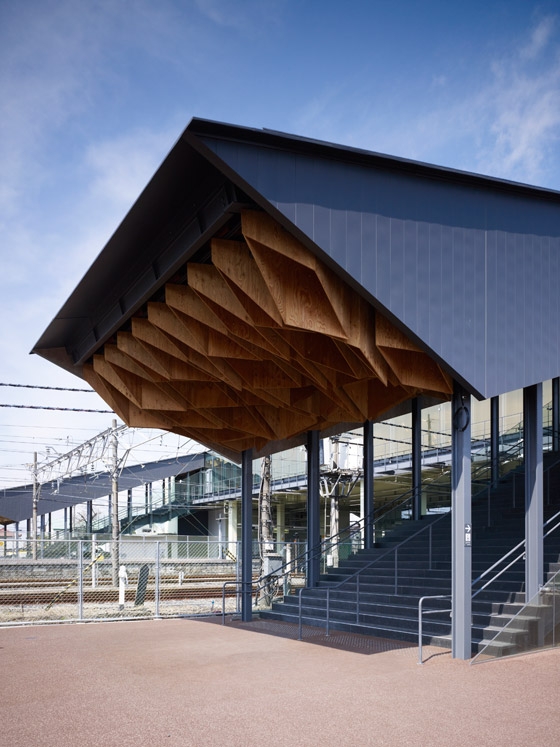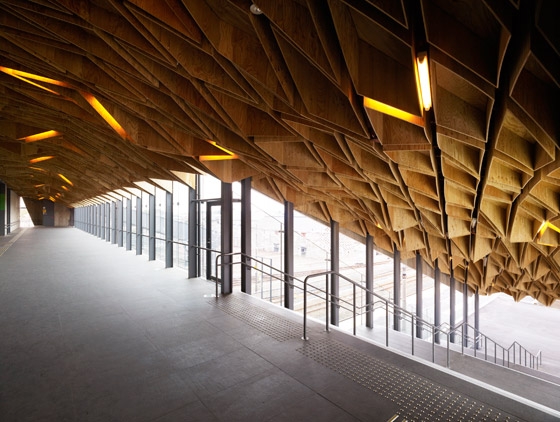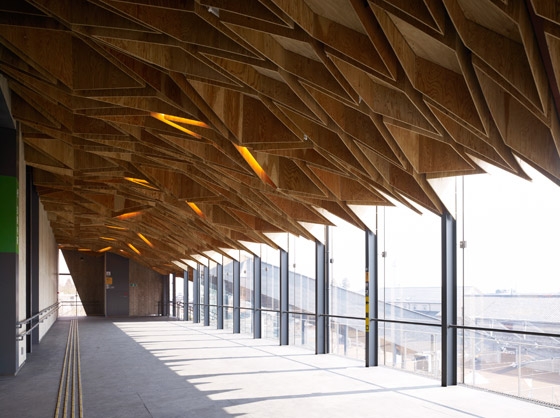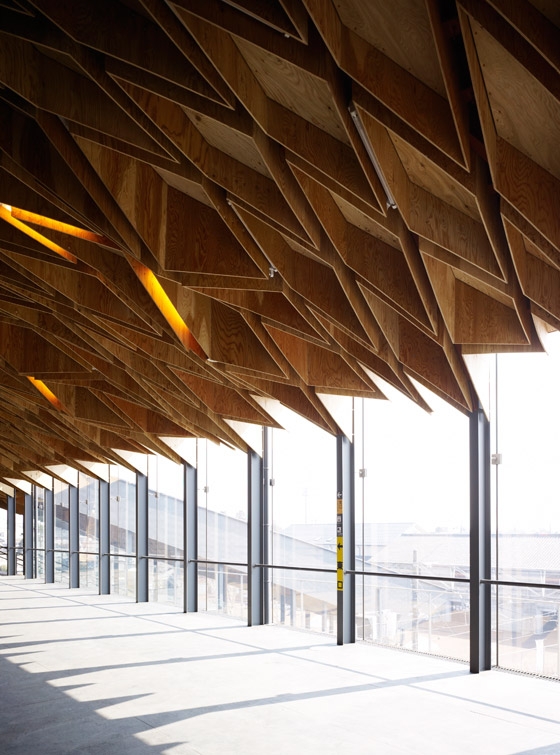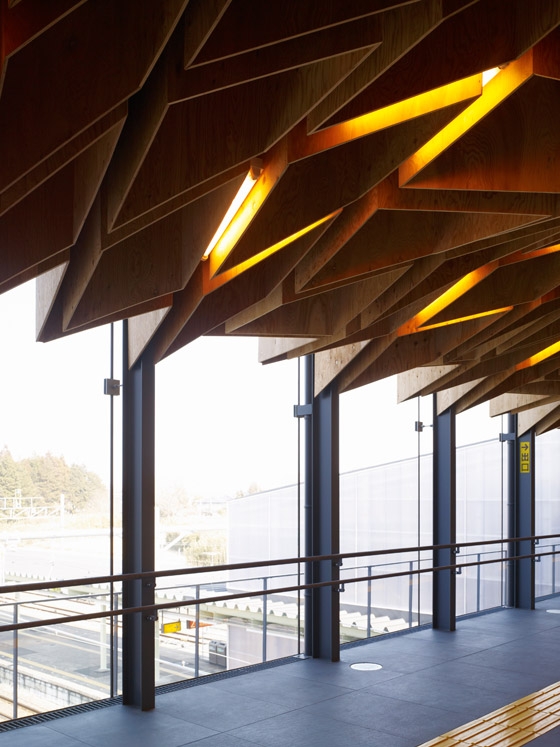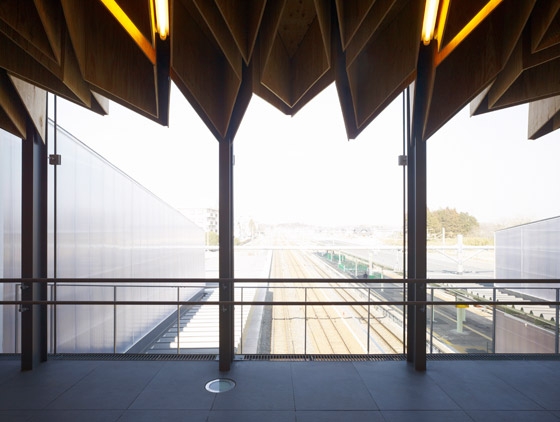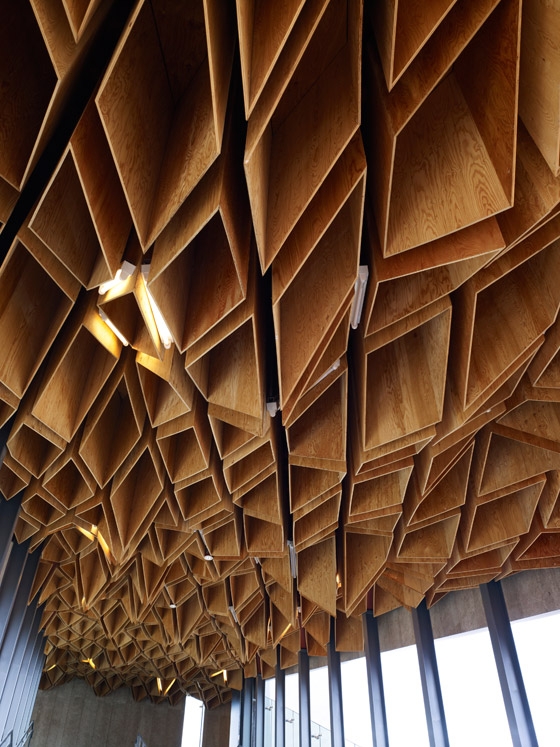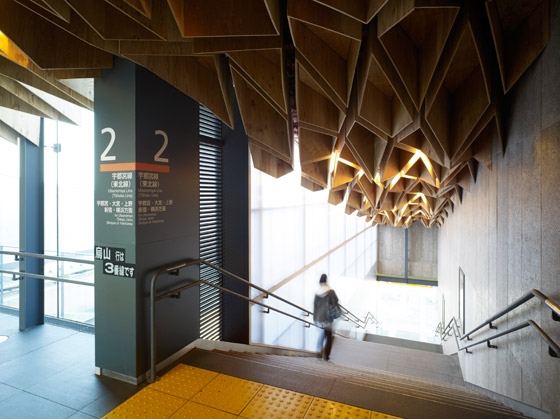Concept: The starting point was to open the east exit of Hoshakuji Station. We aimed at connecting the west and east sides of the station, which had been divided by the railroad. It eventually meant the link between the west and the east of the town of Takanezawa, and between the station and Chokkura Plaza & Shelters, which we designed in the east exit area. It is not a design of a station as a box, but is as an aperture. The aperture starts at its ‘neighbor’, Chokkura Plaza. We first decided to preserve the old warehouse of Oya stone that had existed in the area. Then we took advantage of pores in Oya stone, and used them in the new structural system, in which steel frame and Oya stone are combined diagonally, and added the system to the warehouse. Following the design of this ‘neighbor’, we extended this diagonal skin to the other ‘pore’ or ‘aperture’, which is the station. By such extension and connection, we attempted to link not only the station’s west exit and east exit, but also the station and its location.
In order to reduce the weight, we used lauan-made plywood for structure, instead of Oya stone. By using wood, I wanted to revive the humane and warm atmosphere once any station building used to have. The touch of this station building would be conveyed further to the landscape of paddy fields and wooden houses in the town of Takanezawa.
Our emphasis was that by creating ‘pores’, things could be pulled together and restore the community that had been long fragmented.
Verfasser: Kengo Kuma
KKAA and JR East Design Corporation
Structural engineers: JR East and Oak Structural Engineering
Construction: Totetsu Kogyo Co., Ltd.


